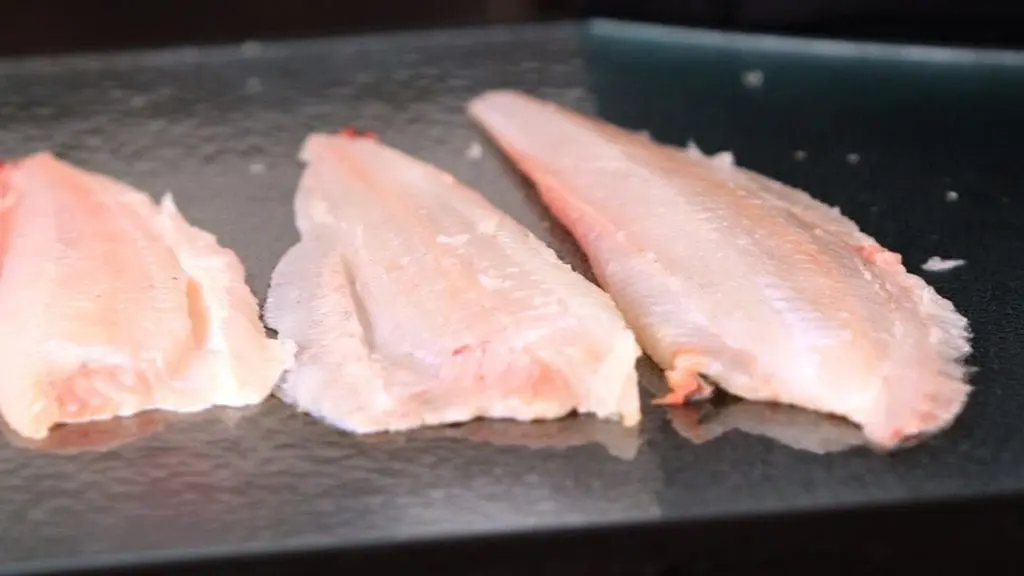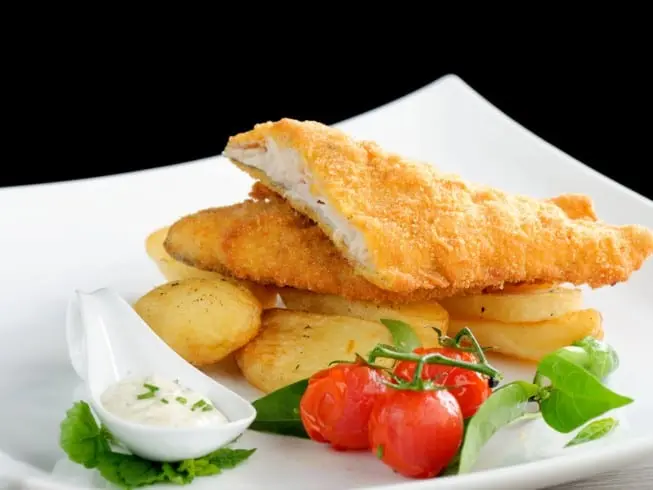Contents
Flounder is a marine fish of the flounder family, a subfamily of flounder-like, in which there are about 28 genera and 60 species. Distinctive features of this fish make it recognizable among thousands of sea brethren: a flat, flattened body and eyes that are on one side. The asymmetrical body of the flounder has a double color: the side of the fish, on which it spends its entire adult life, is pearly white.
The side facing the surface is dark brown and disguised as the color of the bottom. Such “equipment” protects the flounder, which not only swims, but also crawls along the bottom, over stones and pebbles, sometimes burrowing into the sand right up to the eyes. Its length only in rare cases exceeds 60 cm, and its weight only in exceptional cases reaches 7 kg. Life expectancy is 30 years.
History
In the ancient German analogue of the folk tale “About the Fisherman and the Fish,” the old man caught with his net not a goldfish, but a sea monster – a flat fish with eyes located on the outside. The flounder became the heroine of this work. Many folk tales and legends circulated about this amazing fish – its appearance was so amazing and its white meat turned out to be so tasty.
Beneficial features

Flounder meat is medium fat, but low in calories. It contains many lipids (beneficial fatty acids), which differ from regular fats in that they do not provoke the body to develop cholesterol disease. Thus, by eating flounder meat, one can successfully replace artificial and very expensive vitamins, useful in that they have added omega-3 and omega-6 fatty acids. In addition, flounder is an excellent source of natural protein, which is much better absorbed than proteins from beef and chicken, therefore it is recommended to include it in the diet of children and adolescents, pregnant women, athletes or people involved in hard physical work. Flounder meat is very beneficial for the health of muscles, bones and teeth.
Flounder is superior to other fish products in the presence of pantothenic acid and pyridoxine. Potassium, sodium, iron, calcium, magnesium, zinc and other minerals, micro- and macroelements contained in this sea fish are extremely useful for humans, which:
- regulate water-salt metabolism;
- help convert glucose into energy;
- are a good building material for teeth, bones;
- participate in the formation of hemoglobin in the blood;
- ensure the functioning of enzymes;
- improve muscle and mental performance.
Interesting Facts:

- In 1980, a flounder weighing 105 kg and 2 meters long was caught in Alaska.
Flounder is the only fish that has been spotted by oceanographer Jacques Picard at the bottom of the Mariana Trench. Having plunged to a depth of 11 km, he noticed small flat fish, about 30 cm in length, similar to the usual flounder. - There are several legends explaining this unusual type of fish. One of them says: when the Archangel Gabriel announced to the Blessed Virgin that a divine Redeemer would be born from her, she said that she was ready to believe this if the fish, one side of which was eaten, came to life. And the fish came to life and was put into the water.
- Only sighted species of flounder are able to disguise themselves, while in blinded species this ability is absent. Due to the lack of carbohydrates and minimal fat content in fish, flounder meat is an excellent source of protein for building muscle mass.
- 100 g of boiled flounder contains 103 kcal, and the energy value of fried flounder is 223 kcal per 100 g.
Application
Flounder meat can be boiled, steamed, baked on a baking sheet, in the oven or in pots, stuffed, stewed, filleted into rolls and fried (in wine sauce, in batter or breading, with vegetables, shrimps, etc.). Its meat is often the main ingredient in a variety of salads. Experienced cooks advise during frying to first put the flounder fillets with the dark side down – the fish fried in this way turns out to be more tasty. Vegetables, oil and spices perfectly emphasize the original taste of flounder meat.
How to choose a flounder

The process of choosing a flounder is no different from evaluating quality fish of other species, but there are some nuances that must be taken into account. Some features of the appearance and structure of the body will help determine a fresh and really tasty flounder.
The body of the flounder is thin, and a distinctive feature is the unusual arrangement of the eyes next to each other on only one side of the head. It is necessary to examine the fish when buying from different angles. One part of it is always dark with characteristic orange blotches, while the other is white and rather rough.
Large individuals of flounder can reach a length of 40 cm. It is better to buy medium-sized fish. The older the flounder, the more tough the meat will be. Although rigidity in this case should not be taken literally. A quality flounder is always tender and juicy fish.
- the surface of the chilled flounder should be flat, without damage or doubtful stains;
- chilled flounder gills are always pink, and eyes are clear;
- if you press your finger on the skin of the chilled flounder, then there should be no dents (high-quality fish always takes its original shape after pressing and does not deform);
- when comparing commercially available flounder, it is better to give preference to more meaty fish;
- flounder fillet is always white;
- flounder scales are slightly rough on both sides (flounder should not be slippery to the touch or have a coating resembling mucus);
- on the light side of the flounder, dark spots or specks can be noticeable (you need to look at such spots, if you can clearly see that this is the color of the skin, then you can buy fish);
- the fins and tail of the flounder (regardless of gender and age) always have orange blotches (this nuance is a color feature);
- if the flounder is bought in a package, then you need to check the container or package for damage (sealed areas, tears and other defects should be a reason for refusing to buy fish).
Fried flounder

Fried flounder served with garlic chips and rosemary.
- Food (for 4 servings)
- Flounder, fillet – 4 pcs. (180 g each)
- Garlic (sliced) – 3 cloves
- Fresh rosemary – 4 sprigs
- Olive oil – 1.5 tbsp. l.
- Salt – 0.25 tsp
- Ground black pepper – 0.25 tsp.
- Ground paprika – 0.25 tsp
- Lemon wedges (optional)
- Mashed potatoes for garnish (optional)
How to cook fried flounder:
- Heat a large skillet over medium heat. Lubricate with oil. Add the garlic and rosemary and fry, stirring occasionally, for about 3 minutes. Transfer the garlic and rosemary to a paper towel. Leave the oil in the pan.
- Increase heat under the pan. Sprinkle flounder fillets with salt, paprika and pepper on all sides. Place the fish in a preheated pan, fry for about 3 minutes on each side.
- Place the fried flounder on 4 serving bowls and top with lemon chips and rosemary sprigs. Serve fried flounder with lemon wedges. You can serve mashed potatoes as a side dish.









